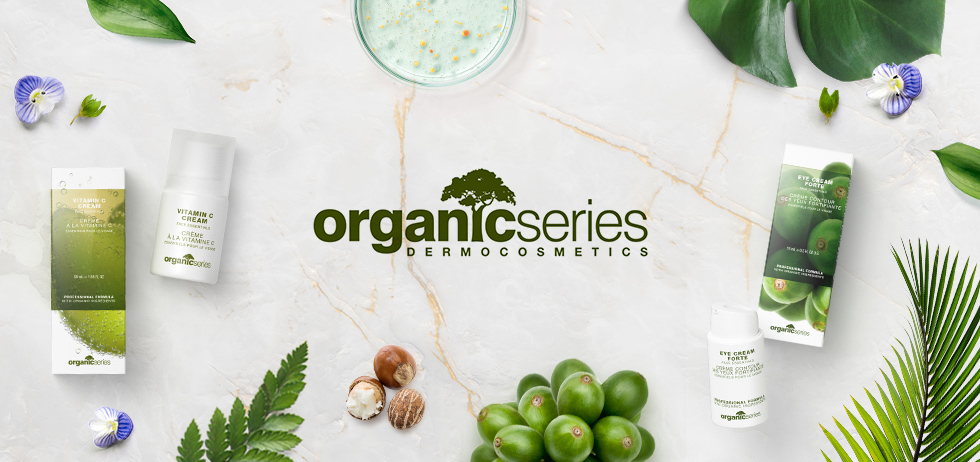How do I identify my skin type?
How do I identify my skin type: Understanding your skin is the first step to achieving a healthy, radiant complexion. But if you’ve ever asked yourself, “how do I identify my skin type?”, you’re not alone. With so much conflicting advice and an overwhelming range of products, pinpointing your skin type can feel confusing. Fortunately, it doesn’t have to be.
In this guide, we’ll walk you through the 10 best tips to answer the question: how do I identify my skin type? With these practical methods, you’ll gain clarity and confidence to tailor your skincare routine to what your skin truly needs.
Why Skin Type Matters
Before diving into the tips, it’s important to understand why skin type matters. Your skin type determines:
-
What kind of cleanser or moisturizer will work best for you
-
How often you should exfoliate
-
Which ingredients to avoid or prioritise
-
Whether you’re prone to dryness, oiliness, or breakouts
Choosing the wrong products for your skin type can lead to irritation, clogged pores, or even worsen existing skin concerns. That’s why learning how to identify your skin type is essential for effective skincare.
1. Try the Bare-Faced Test
The bare-faced test is a simple and effective way to help you answer “how do I identify my skin type?” Here’s how it works:
-
Cleanse your face with a gentle, non-stripping cleanser.
-
Pat dry and leave your skin bare (no moisturiser or products).
-
Wait for about 30–60 minutes.
-
Observe how your skin feels and looks.
Results Interpretation:
-
Oily Skin: Shiny in the T-zone and cheeks.
-
Dry Skin: Feels tight, flaky, or rough.
-
Combination Skin: Oily in the T-zone but dry or normal elsewhere.
-
Normal Skin: Feels balanced—not oily or dry.
-
Sensitive Skin: Redness, itchiness, or irritation may appear.
2. Blotting Sheet Method
A more tactile way to test is using blotting paper:
-
Gently press blotting paper on different areas of your face.
-
Hold it up to the light to see how much oil is absorbed.
Oily skin will leave significant oil, while dry skin will show little to none. Combination skin usually shows oil in the forehead and nose areas only.
3. Pay Attention to Pores
Your pores can reveal a lot. Take a close look at your skin in natural light or with a magnifying mirror:
-
Large, visible pores (especially in the T-zone) may indicate oily or combination skin.
-
Tiny or barely visible pores often signal dry or normal skin.
-
Red, inflamed pores could be a sign of sensitivity or acne-prone skin.
4. Evaluate How Your Skin Feels by Midday
If you constantly find yourself reaching for blotting papers or powder, your skin may be oily. On the other hand, if your skin feels tight or looks flaky by the afternoon, you likely have dry skin.
Answering “how do I identify my skin type” involves paying attention to how your skin behaves throughout the day—not just in the morning or evening.
5. Watch How Your Skin Reacts to Products
Your reaction to skincare products can be a major clue:
-
Dry skin may sting or feel irritated after applying active ingredients like retinol or acids.
-
Oily skin might tolerate more actives but react with breakouts if the product is too rich.
-
Sensitive skin often reacts with redness, itching, or burning—especially to fragrance or alcohol.
6. Consider the Seasons
Your skin type can shift with the weather:
-
In winter, skin often becomes drier due to low humidity and indoor heating.
-
Summer heat and humidity can increase oil production, especially in those prone to oily skin.
Ask yourself, “how do I identify my skin type consistently across seasons?” Tracking changes and adjusting your routine accordingly is key.
7. Assess Your Skin After a Shower
After a warm shower, observe your skin:
-
Dry skin will immediately feel tight or itchy.
-
Oily skin may still feel soft or greasy.
-
Sensitive skin may show redness or irritation quickly.
This quick post-shower test offers more insight into your skin’s natural state.
8. Keep a Skin Journal
Logging your skin’s appearance, texture, and how it feels after applying products or throughout different times of the day can help you identify patterns. This is especially helpful if your skin seems to change often.
When you consistently ask, “how do I identify my skin type?”, tracking your skin over time helps you answer that question more clearly.
9. Consult a Professional (Dermatologist or Esthetician)
Sometimes, it’s best to turn to the experts. A skin consultation with a certified esthetician or dermatologist can give you a detailed understanding of your skin type, condition, and any underlying issues.
At Organic Series UK, we offer skin consultations tailored to help you choose the best organic skincare products based on your individual skin needs.
10. Use Skin Type Quizzes – But Carefully
Online quizzes can be a good starting point—but treat them as a guide, not gospel. Many quizzes oversimplify the process. Combine quiz results with physical observations and professional input for the most accurate picture.
Quick Guide: Common Skin Types
Here’s a breakdown to help you summarise what you’ve learned:
| Skin Type | Characteristics | Common Concerns |
|---|---|---|
| Oily | Shiny, enlarged pores, frequent breakouts | Acne, blackheads, clogged pores |
| Dry | Tight, flaky, dull appearance | Sensitivity, fine lines, irritation |
| Combination | Oily T-zone, dry or normal cheeks | Inconsistent product performance |
| Normal | Balanced, smooth, healthy glow | Rarely breaks out or feels irritated |
| Sensitive | Redness, burning, easily reacts to products | Rosacea, eczema, allergic reactions |
Final Thoughts
So, the next time you wonder, “how do I identify my skin type?”, you’ll have a toolbox of methods to guide you. Skin is dynamic—it evolves with age, environment, hormones, and health. Identifying your skin type isn’t about one test or label; it’s about understanding your skin’s behavior and making thoughtful choices based on that.
At Organic Series UK, we believe in personalised skincare. Our range of organic products is formulated with clean, natural ingredients tailored for every skin type—so whether you’re oily, dry, or sensitive, we’ve got you covered.
Discover your skin’s best match. Browse our full range of skin-type-specific organic products at OrganicSeries.co.uk and take the guesswork out of glowing skin.
How to design the best organic skincare for your skin type?
Here at Organic Series, we provide a wide range of natural and organic skincare products for all skin types and issues. Once you’ve determined your skin type you can easily choose the perfect products for your foolproof skincare routine!
For normal skin we recommend sticking to the basics:
Start off with an Optimal Cleansing Gel, boost the skin vitality with the Vitamin C Serum, lock in the moisture and active ingredients with the SPF20 Moisturising Cream and you’re good to go!
Every once in a while you can make yourself a pampering session with the Micronized Booster Gold and one of our Facial Masks, for example the Red Wine Algae Mask.
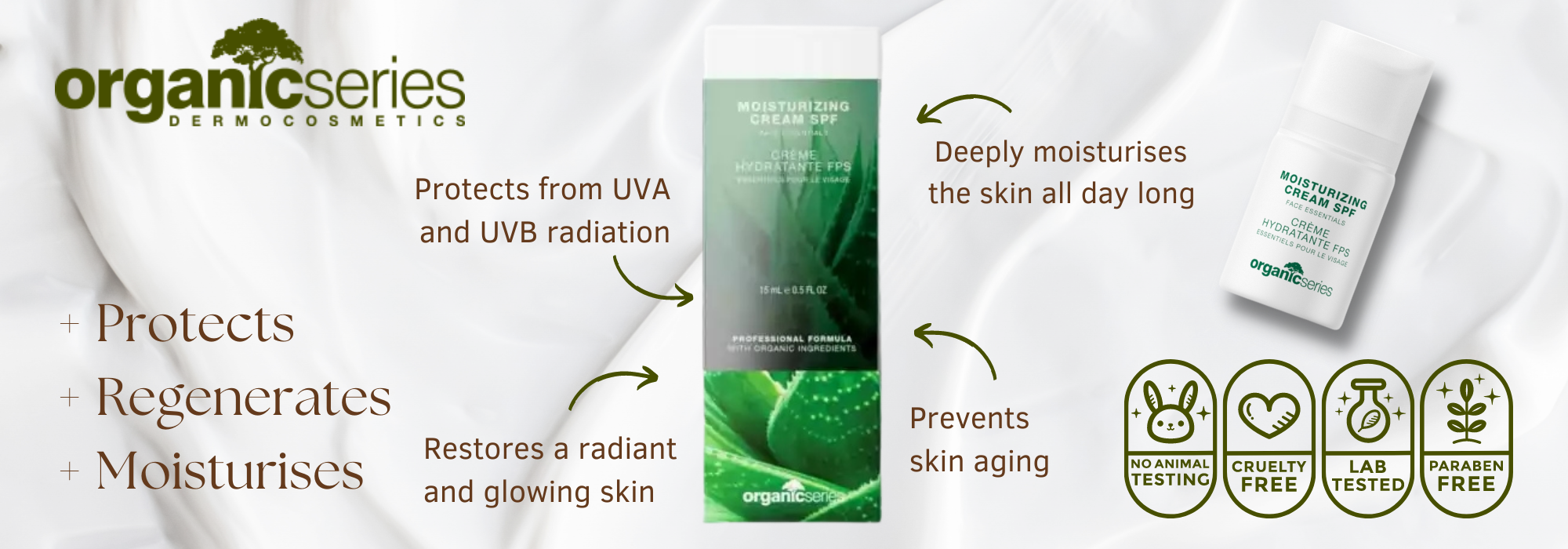
You will be able to keep your oily skin in check by following this simple professional skincare routine:
Wash your face with the Optimal Facial Cleanser, exfoliate with the Enzymatic AHA Gel, follow up with the Oil-Control Serum or Acne Control Serum and finish off with the Acne Control Cream or the SPF40 Moisturising Cream.
Once or twice a week do a facial with the Zinc Algae Mask or the Green Clay Mask – for best results, use one of the abovementioned serums before applying the mask.
Oily skin will also benefit greatly from regular acid treatments – our Mandelic+Glycolic Acid Peel is here to take care of your oily skin!
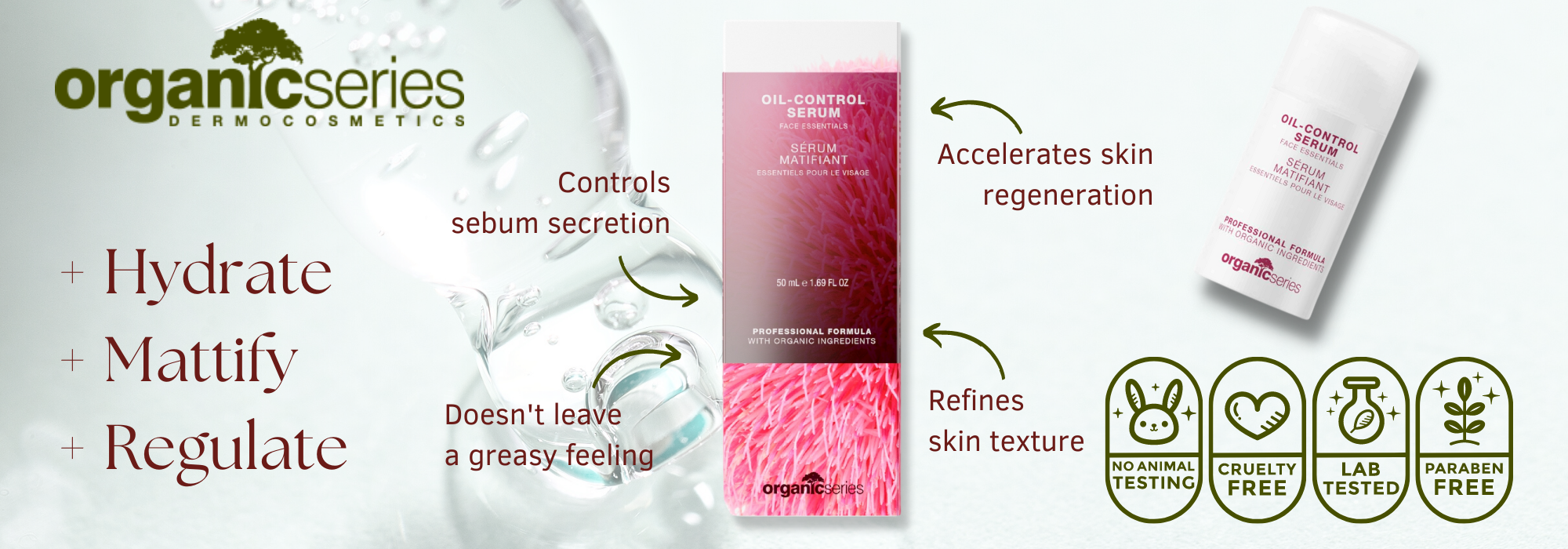
To take the best care of your dry skin follow this regimen:
Wash your skin with the Optimal Facial Cleanser, tone it with the Enzymatic AHA Toner, add some extra moisture with the Intensive Moisture Serum or the Hyaluronic Acid 2-in-1 and lock in the hydration by applying the SPF20 Moisturising Cream.
Once a week you should give your skin some extra love by performing a skin hydrating ritual – applying the moisturising serum and layering it with the Argan Oil Algae Mask for enhanced moisture absorption.
One more pro tip – for the night-time routine you can swap the SPF Cream for the Hydro-Control Lipo Cream to boost the skin lipid layers and make sure you wake up with a glowing and perfectly moisturised skin! It’s the perfect alternative to petroleum slugging, with a much lower risk of pores clogging and a much better impact on the environment!!!
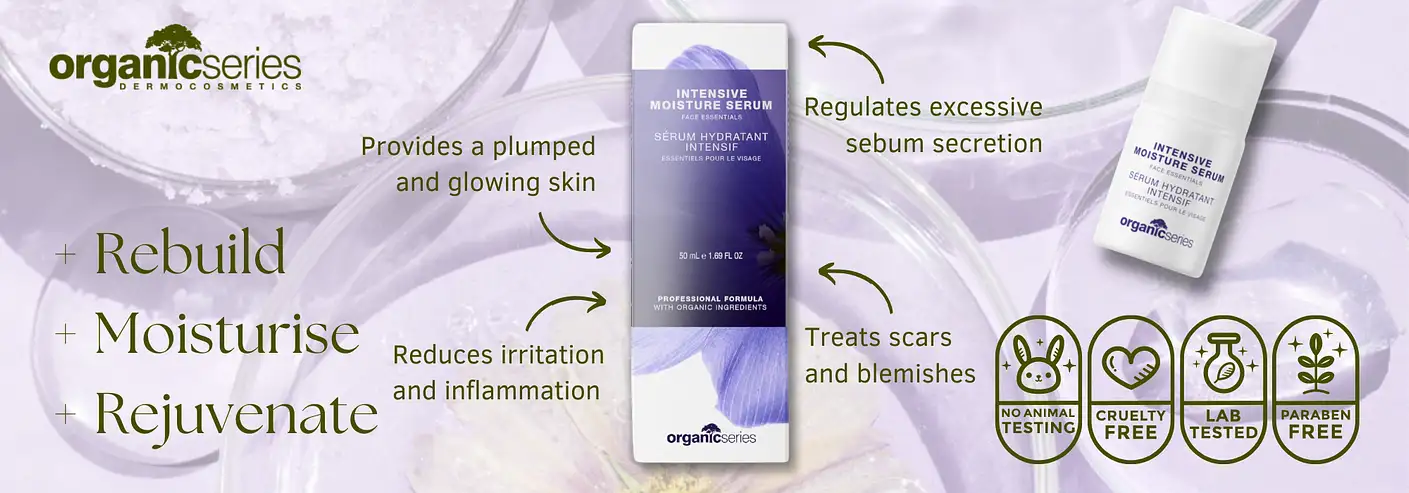
People with combination skin often need to combine more products in their skincare routine.
Battling excessive oiliness in some parts of the face AND excessive dryness in other parts of the face can be really difficult and annoying. But it can be really easy to manage combination skin if you follow a few simple rules:
It’s usually okay to use one type of a moisturiser (for example our SPF20 Moisturising Cream) for the whole face but it’s best to use two different serums before the cream – a moisturising serum for all the dry places and an oil-control serum for all the oily parts of the face. Don’t forget to properly cleanse your skin every day.
Pro tip – combination skin loves our algae masks! These are able to regulate the oiliness while providing hydration to dry skin as well. Our Aloe Vera Algae Mask might be the ideal choice for your combination skin!

Sensitive skin calls for sensitive care and Organic Series knows all about this!
We have a range of Anti-Redness products that are designed to soothe all irritations and calm the skin.
Start off with our super gentle Micellar Cleansing Water, then use the Anti Redness Serum coupled with the Micronized Booster Silver and layer it up with the Anti Redness Cream Forte.
Every once in a while use the Soothing Cream Mask for some extra skin soothing and nourishing.
And never leave the house without sun protection, sensitive skin is very prone to sun damage so you should always apply high quality facial sunscreen, for example our SPF40 Moisturising Cream.
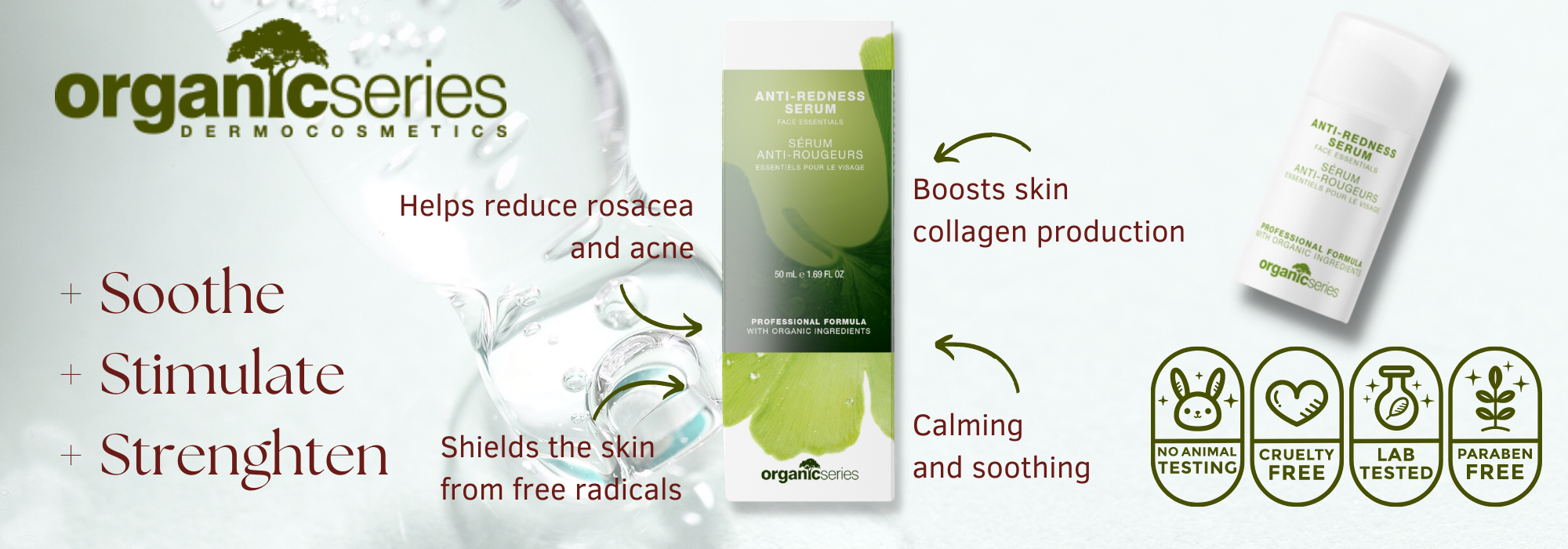
More inspiration
Follow Organic Series UK on instagram and facebook for more inspiration, expert tips and special discount codes!


